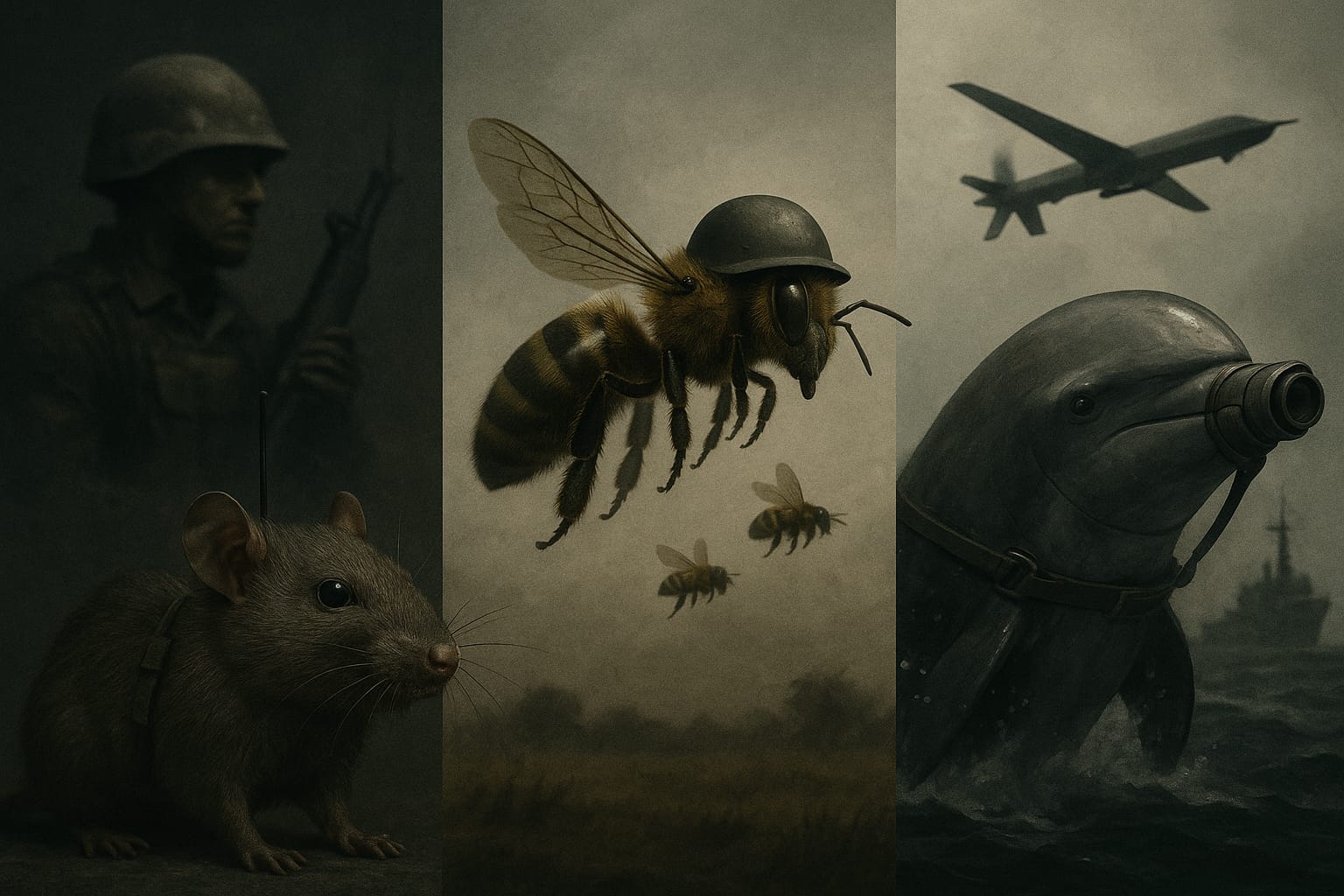Across continents and conflict zones, militaries are turning to an unlikely force multiplier: animals. From bomb-sniffing rats in Cambodia and Ukraine to bees guarding borders in India and dolphins scanning the seabed for mines, trained animals are proving themselves as valuable, cost-effective, and sometimes life-saving tools in modern security operations.
Here’s how they’re being used and why more countries are embracing them.
How are rats being used by militaries in mine detection and security?
In Cambodia, large rats scurry across minefields, not in search of food but of danger. These are African Giant Pouched Rats, trained to detect hidden explosives with remarkable precision. Known as “HeroRATs,” they are light enough not to trigger landmines but possess an acute sense of smell that allows them to detect traces of TNT and other explosives.
Measuring up to 45 centimetres in length with tails nearly as long, these rodents can clear a *tennis court-sized area in just 30 minutes, a task that would take human deminers several days. They are used in countries like Mozambique, Angola, and Cambodia, with growing deployment in Ukraine, Israel, and parts of Europe. The Belgian non-profit APOPO pioneered the program and continues to train the rats for mine detection and even tuberculosis diagnosis in medical labs.
In Israel, HeroRATs are also trained to work in urban environments, such as airports, where they sniff luggage for explosives as a low-profile alternative to dogs. Their speed and stealth make them suitable for covert security operations.
Russia has also trained rats for mine detection, while Iran once claimed to have developed “suicide rats” designed to infiltrate enemy installations. The latter claim remains unverified and widely doubted by experts.
What other animals are being trained for military and security missions?
Beyond rodents, militaries are innovating with other animals suited to their environments:
- Bees on India’s Border: Along the India-Bangladesh border, the Border Security Force (BSF) has deployed beehives as a deterrent against infiltrators. In West Bengal’s Nadia district, apiaries are installed on barbed-wire fences. Anyone attempting to cross faces aggressive swarms. Flowering plants have been cultivated nearby to sustain the hives, and BSF personnel have been trained in basic apiculture.
- Marine Mammals in Naval Operations: The U.S. Navy’s Marine Mammal Program trains dolphins and California sea lions to detect *underwater mines, retrieve objects, and even tag divers. Dolphins use natural sonar to locate submerged threats with higher accuracy than many machines. Sea lions, with excellent underwater vision and trainability, are used for recovery and surveillance. Russia operates a similar marine mammal program, deploying trained dolphins for underwater reconnaissance and reportedly espionage.
Together, these animals are reshaping how militaries approach security, blending biology and strategy in a way that emphasises adaptability and low-tech efficiency alongside cutting-edge systems.
From minefields to marine patrols, animals are being integrated into the global defence ecosystem not just as symbols of resilience, but as active and reliable participants in complex military operations. As technology advances, the instinct and intelligence of these animal operatives continue to prove indispensable on today’s evolving battlefields.
